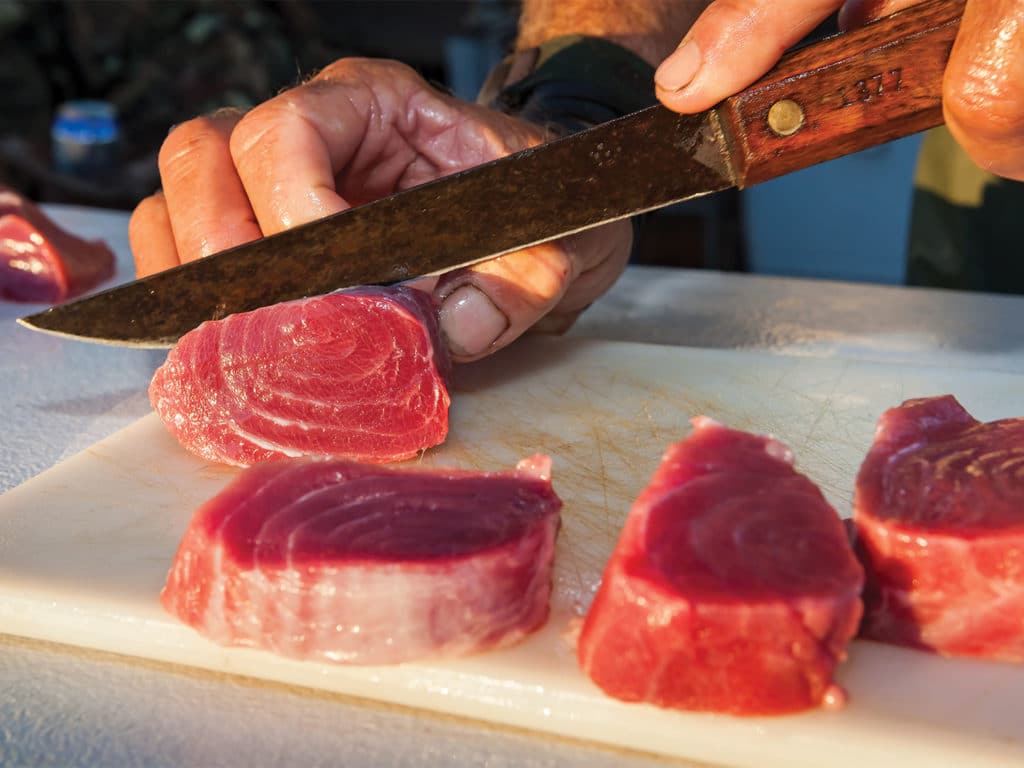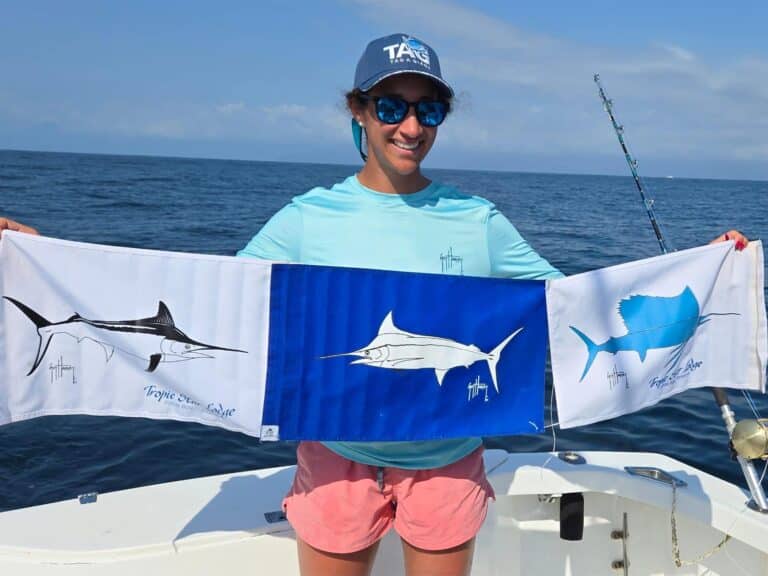
Special delivery: Sign up for the free Marlin email newsletter. Subscribe to Marlin magazine and get a year of highly collectible, keepsake editions – plus access to the digital edition and archives.
We all love fresh fish, whether we eat it as sashimi on the way back to the dock or store it for a few days in the refrigerator for later. We go to reputable restaurants to order the fish of the day and hope it’s what they say it is or, at least, what the wholesale seafood salesman told them it was. For me, it would be easy to sell every snapper or any other white-meat fish that we catch as legitimate red snapper.
We were on Turneffe Island, Belize, in 1980 and went to the lodge for dinner. Of course, we had a few cocktails before we got into the dining room. We sat down to plenty of fried-fish fingers on the table for appetizers. I devoured my share after a long day of fishing. Later that night, I got very sick with flu-like symptoms, even losing my vision for a few very scary days. It ended up being ciguatera poisoning.
Once ciguatera gets into your body, it remains in your nervous system for life. Just a few years ago, I ate some “snapper” and got very sick again with a relapse of ciguatera. I even flew myself to the Mayo Clinic to see if they could help me, but they weren’t much help at all—the doctors there had apparently never treated anyone with it.
Watch: We show you how to rig one of the best baits for blue marlin: the swimming mackerel.
When I was writing my book, I started studying about ciguatera and found all my symptoms, such as migraines, shooting pains through the chest, and burning sensations in my arms and legs. So at least now I can have some inner peace over all of the side effects. I recently talked to a doctor friend of mine who told me he eats only fish that he catches himself. I wish I was that smart back then!
Ciguatera is very prevalent in the South Pacific and Australia. They do not eat the large coral trout in Australia, and in Tahiti, they do not eat any coral trout from the Tuamotus, the outer islands of Tahiti. Ciguatera is also found in the Bahamas and down to St. Thomas. The first symptoms are much like the flu, and most doctors treat it as such.
We were fishing off the Ivory Coast on The Madam and The Hooker and had caught a nice-size tuna. We filleted the fish, ate some, and left it in the refrigerator for a few days to enjoy it later that week. We fed some to the guests just hours before they flew back to the US. Later that night, with just the crew on the boat, we opened another bag of tuna and had it for dinner. We had not even started to get up from the table and we were all running for the heads. Thank goodness there were only five of us and we had five toilets on the two boats. It wasn’t pretty. We later found out that our guests did not get sick from the fish they ate; it was just us.
Read Next: Meet the man behind the iconic Jarrett Bay brand: Randy Ramsey.
When you visit a good fresh-fish market, you see all the fillets laying out on ice in the open—they cover it only at night, when the fish is moved back to the cooler and out of the display case. Unless you are going to freeze the fish or eat it within a day, you should leave the plastic bag open to let it breathe, just like the fish markets do. And if you plan on refrigerating it for a few days, I also recommend that you drain it occasionally to be sure you enjoy the fish at its freshest.







